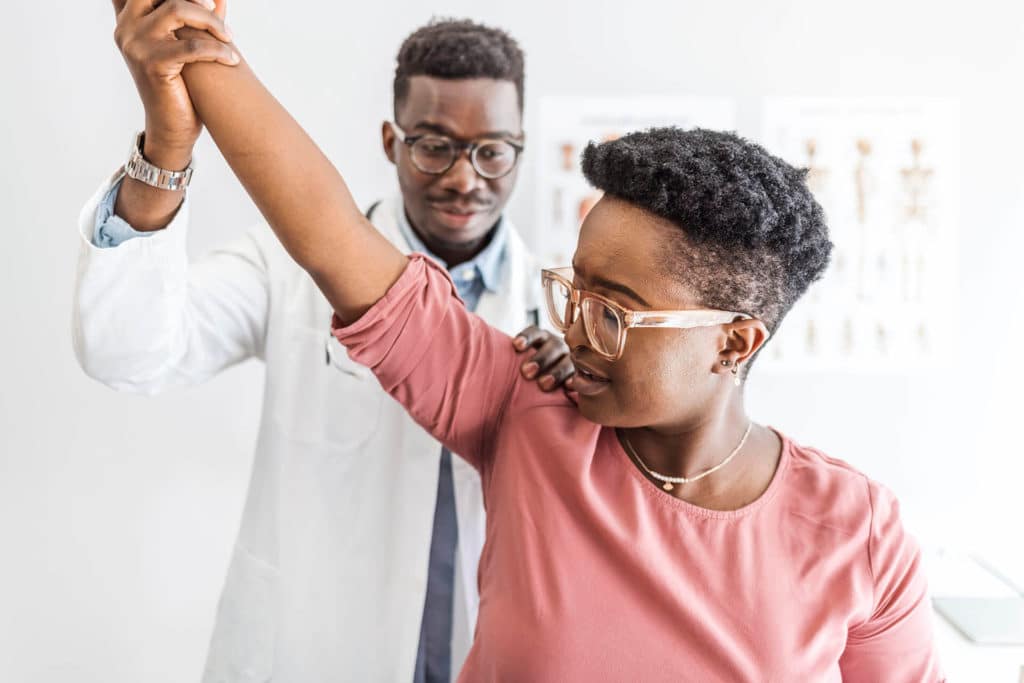

What is Rheumatoid Arthritis?
What is Rheumatoid Arthritis?
Learn about rheumatoid arthritis, how it causes joint pain, causes and risk factors, signs and symptoms, and treatment options.
Table of Contents
What is Rheumatoid Arthritis?
Rheumatoid arthritis (RA) is an inflammatory and autoimmune illness. The immune system destroys the body’s healthy cells, leading to severe swelling in the affected areas. Millions of citizens in the US have chronic pain due to arthritis every year. 15 million adults with arthritis report having severe joint pain due to their condition.1
Rheumatoid Arthritis Definition
Rheumatoid arthritis is a long-term condition that worsens over time. It results in severe deformity and immobility, primarily in the feet, fingers, ankles, and wrists.
How Common is Rheumatoid Arthritis?
In the US, 58.5 million individuals, or 24% of the population, suffer from arthritis. RA is the most common reason for work incapacity, with $303.5 billion in annual medical costs and missed wages. It’s among the top common forms of arthritis.
Who Gets Rheumatoid Arthritis?
Rheumatoid arthritis can affect anyone. If individuals are exposed to specific risk factors, they can develop rheumatoid arthritis. The condition can develop at any age, although its risk increases with age. Women experience rheumatoid arthritis more frequently than men.
Understanding Joint Pain
Muscle stress, joint injury, and inflammation are all potential causes of joint pain. Joint pain can be a symptom of various illnesses, including cancer, autoimmune disease, infectious disease, inflammation, and trauma. The most common cause of joint pain is arthritis.
What Causes Joint Pain?
Several factors cause joint pain. Acute joint pain typically develops rapidly and lasts only a short time. It could result from a wound or a chronic condition like arthritis. The symptoms may indicate what is causing the pain. The following are causes of joint pain:
- Osteoarthritis: The most prevalent cause of joint discomfort is osteoarthritis. This form of arthritis only occurs when the boned cartilage cushion deteriorates. Although osteoarthritis can harm any joint, it most frequently affects the hips, hands, spine joints, and knee.2
- Rheumatoid Arthritis: Common joints affected by rheumatoid arthritis include the wrists, knees, and hands. Rheumatoid arthritis causes joint tissue to deteriorate by inflaming the joint lining. This tissue injury may result in chronic or ongoing pain and instability.
- Gout: A typical type of painful inflammatory arthritis is gout. The joint of the big toe is commonly affected. Men are more likely than women to develop gout.3
- Bursitis: An irritated or inflamed bursa sac is known as bursitis. A closed, liquid-filled sac called a bursa is a cushion and gliding surface to lessen friction between human tissues. Bursitis develops when the bursae swell up.
Causes and Risk Factors of Rheumatoid Arthritis
The immune system of the body destroys its healthy cells, which leads to rheumatoid arthritis. Although there are no known causes for RA specifically, several factors can increase the risk of having the condition.
What Causes Rheumatoid Arthritis?
According to researchers, genetics, hormones, and external conditions may all have a role in RA development. Factors stimulate your immune system to assault the joints in rheumatoid arthritis. The trigger could be smoking, an infection, or physical or emotional stress.
Rheumatoid Arthritis Risk Factors
The following are common risk factors for arthritis.
- Sex: Women experience rheumatoid arthritis more frequently than men. The condition affects roughly two to three times as many women as men.
- Age: Rheumatoid arthritis can develop at any age, but the likelihood rises with advancing years. Juvenile idiopathic arthritis, a disorder linked to rheumatoid arthritis, may be identified in kids and younger teenagers.
- Genetics: People may be more susceptible to developing RA if a family member has the condition. RA is more prone to occur in those born with particular genes. The human leukocyte antigen class II genotypes can worsen arthritis.4
- Smoking: According to research, those who smoke for an extended period are more likely to get rheumatoid arthritis. Smokers may experience a more severe case of rheumatoid arthritis.
- Excess Weight: High quantities of cytokines, proteins that can lead to inflammation throughout your body, are released by extra fat tissue. The joint tissue in RA also produces these proteins.
Signs and Symptoms of Rheumatoid Arthritis
When rheumatoid arthritis symptoms worsen, these episodes are known as flares, and when they improve, they’re known as remissions. Symptoms of rheumatoid arthritis will be detailed below.
Joint Pain
Joint pain caused by rheumatoid arthritis can range from slight to severe. Joint tissue is harmed in an RA-affected joint because of the inflammation of the joint lining. Long-lasting or chronic arthritis pain may result from this tissue injury, especially after a brief period of inactivity.
Joint Stiffness
Rheumatoid arthritis can cause stiffness in the joints. If it affects the hands, people may find it challenging to make a fist or fully bend their fingers. Similar to joint pain, stiffness is frequently worse after inactivity.
Joint Tenderness and Swelling
Rheumatoid arthritis can result in deformity, swelling, and tenderness in the joint. A buildup of fluid causes joints to deteriorate and disintegrate as the tissue lining the synovial membrane becomes inflamed and swollen.
Fever
A low-grade fever is a typical symptom of RA. It’s frequently caused by immune system dysfunction or joint inflammation. If you have a fever higher than 101°F, consult a doctor.
Other Symptoms
Rare rheumatoid symptoms include skin rashes and bruising, breathing problems, sleep problems, and numbness and tingling.
How Is Rheumatoid Arthritis Diagnosed?
Due to the early indications and symptoms’ similarity to many other diseases, rheumatoid arthritis can be challenging to diagnose in its early stages. Specialists conduct physical examinations and interview individuals about their medical histories and symptoms to diagnose RA. The rheumatologist will further order blood tests and imaging tests such as X-rays or an MRI.
Methods used to diagnose rheumatoid arthritis include:
- Medical history
- Physical examination
- Electrophysiological tests
Treatment for Joint Pain Caused by Rheumatoid Arthritis
Using drugs and self-management techniques, RA can be effectively treated and managed. Joint pain medications known as disease-modifying antirheumatic medicines are used to reduce the progression of RA and prevent joint deformity. People can manage RA by practicing self-management techniques that have been shown to lessen pain and impairment.
Sometimes what seems to be joint pain is caused by a problem unrelated to joints, such as a bone fracture. It’s critical to have an accurate diagnosis in order to implement the most effective treatment for rheumatoid arthritis. An early diagnosis can improve the condition’s management.
Treatment Options
If you or your loved one are experiencing rheumatoid arthritis or related joint pain, there are treatment options available to mitigate the impact. These will be discussed further below.

Self-Care
People can use a few home therapies to relieve mild, fleeting joint pain. This involves applying ice to the affected joints, reducing discomfort and inflammation. Individuals might use a heating pad or wrap multiple times daily for muscular spasms around joints.
Medication
Healthcare professionals may prescribe or administer an over-the-counter or prescription nonsteroidal anti-inflammatory medication for moderate to severe joint discomfort and swelling. To treat joint pain, doctors may also use injections and topical analgesics.
Physical Therapy
Physical therapists help people with arthritis pain by strengthening the muscles around the affected joints. The therapist will employ manipulation, electrical nerve stimulation, heat or cold therapy, and ultrasound.
Alternative Treatments
Glucosamine and chondroitin supplements can reduce joint pain and enhance movement. These two chemicals are healthy cartilage elements that protect joints and cushion the bones.
Surgery
Individuals may choose to have surgery to lessen arthritis pain and enhance mobility. Joint replacement surgery aims to replace all or part of a damaged joint with a synthetic one. This major procedure necessitates several days in the hospital and months of rehabilitation.
Find Help for Rheumatoid Arthritis and Joint Pain at J. Flowers Health Institute
Consult J. Flowers Health Institute experts if you or a loved one has signs of rheumatoid arthritis and joint pain. With an unwavering focus on whole-person health and wellness, experts at J. Flowers Health Institute use the most recent methods and therapies to assist you in managing and healing your rheumatoid arthritis and joint pain.









